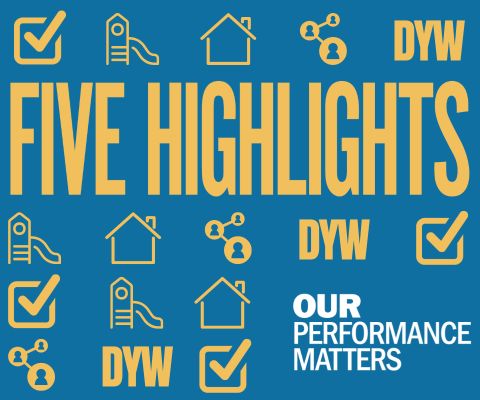Energy / Another Kergord substation and larger pylons being considered by SSE
Plans could provide a one off £2 million in community benefit for Shetland
PYLONS larger than the new overhead lines in the Tingwall area are being considered by energy giant SSEN for Shetland’s future energy network.
If they were installed, they would be located on land between Kergord and a planned large 2GW northern substation hub in the Sullom Voe/Scatsta area.
Meanwhile a second substation could be built north of Kergord.
New infrastructure developments are being proposed by SSE to facilitate future projects like a second HVDC subsea cable to the Scottish mainland, and offshore wind east of Shetland.
These could result in community benefit money worth £2 million – but this would be a one-off payment, and not annual.
SSEN is hosting a community engagement event in Mareel today (Tuesday) through to 7pm where a range of energy developers will be on hand to speak to the public.
This includes SSEN itself, Statkraft, the team behind the Stoura offshore wind farm, Shetland Aerogenerators and Veri Energy, which is leading the decarbonisation of Sullom Voe Terminal.
SSEN Transmission’s lead project manager Alan Kelly said the event is being put on in response to feedback from Shetland residents who felt they found it difficult to see the “bigger picture”.
“We’re committed to events like this,” he told Shetland News in a pre-event interview.
“We didn’t need to have this event today. I think people have said ‘you’re not listening’ – if we weren’t listening we wouldn’t be here. We want to engage with the community.”
SSEN held a seminar last week with councillors on the company’s future plans but is understood that some elected members were left concerned about some of the proposals.
One of the more thorny topics were possible steel lattice-like pylons which are under consideration between Kergord and the Sullom Voe/Scatsta area.
Become a member of Shetland News
Kelly explained there is a proposed new substation for the Kergord area – “probably around the north of the Kergord valley or perhaps further up”.
There is already a converter station at Upper Kergord, as well as a substation for the Viking wind farm.
Kelly said a second station – which would be around the same size as the existing one in Kergord – would allow voltage to step up from 132kV to 220kV.
“Yes, it’s another footprint,” he added, “but it allows us to minimise the number of circuits that we’re bringing up to the island.
“The whole Shetland strategy we’ve developed centres around the second HVDC link. All of the projects need to be connected.”
He continued by saying the existing converter station site at Kergord and the northern hub will need linked by circuits, and “typically those circuits will be overhead lines”.
The overhead lines currently running between Tingwall and Sandwater are 132kV, but ones proposed for between Kergord and the North Mainland would be 220kV – so they would need to be bigger.
“The 220kV technology would be what I would call traditional pylons – a four legged base,” Kelly said. “It would look quite different.”
He referenced the Bressay transmission mast as a structure similar in shape – but they would be “nowhere near that height”.
“We’re back in October to consult on that, and we will listen to the community,” Kelly added.
“We understand the impact that these towers would have.
“We don’t have them on Shetland yet, so we would look to really listen to the community.
“Anything that they suggest, we will either adopt or come back and explain why it is just not technically feasible.”
Kelly said installing underground cables can be “really quite challenging”, with digging in peatland tricky and damaging, while they cost more than overhead lines.
“We have to demonstrate to Ofgem and NESO [National Energy System Operator] that we are taking the most economic and efficient solution,” he added.
One councillor less than pleased with the idea of steel pylons potentially coming to Shetland is Lerwick North and Bressay member Stephen Leask, who said he would prefer to see more underground cabling.
He said he feels councillors are “emasculated when it comes to decision making regarding significant planning, as if there’s a block from council, it’ll be overturned at Holyrood”.
“Not only are we paying through the nose for energy in Shetland, but seeing no sensitivity for the treatment of our environment and the visual beauty of our island,” Leask added, saying it is a “double whammy”.
Regarding a planned second subsea HVDC cable, there is already installed between Kergord and Caithness – a 600MW cable which allows power to be exported south, such as from the Viking wind farm, and electricity to come north too.
But the proposed second HVDC link – which could cater for offshore wind to the east of Shetland as well as planned onshore wind farms in Yell – would be three times the capacity.
This means that some of the associated infrastructure needed is larger.
Kelly said where the second HVDC reaches land in Shetland is yet to be decided, but it stands to be in the North Mainland – with the Yell Sound area and Wethersta two possible locations being considered.
But what is clearer location-wise is the northern hub, which will connect developments like offshore wind and Statkraft’s Beaw Field and Energy Isles wind farms in Yell and link in the second HVDC cable.
There is also a hydrogen and ammonia facility being planned by Statktraft in the nearby Scatsta area.
The northern hub footprint could be twice as large as the existing Kergord site, at 800 metres by 500 metres.
There would be a converter station and an AC substation.
Kelly said one thing SSEN plans to consult on is the look of the building and how it “camouflages” into the landscape to minimise visual impact.
He said the Sullom Voe area already being industrial in nature is of benefit, adding that Shetland Islands Council has encouraged SSEN to site as much infrastructure in industrial areas as possible.
Regarding landfall for the second HVDC cable, he said SSEN will work with those with interests in the sea – such as aquaculture firms – “to understand how we can make sure we don’t negatively impact their operations”.
There is also planned to be a new subsea cable from the Shetland mainland to Yell, and a substation in Yell too which will be smaller than the Kergord buildings.
SSEN, meanwhile, plans to use new UK Government guides on installing energy infrastructure and community benefit.
This is a change given that Shetland only receives £2.2 million a year from the Viking wind farm, although local projects are able to bid for a share of a SSEN Transmission fund which covers the north of Scotland.
Under the new guidance SSEN would pay £520,000 in a community benefit for the construction of a substation, converter station or switching station, and £200,000 per kilometre of overhead line.
With this being one-off payments rather than annual funds, this could equate to more than £2 million in total for Shetland, Kelly said.
But he highlighted how community benefit can be felt not just through money, such as jobs and opportunities for the supply chain.
Kelly also said SSEN continues to work on housing in terms of the transient workforce which would be involved in projects’ construction.
He said the company has been speaking to Hjaltland Housing Association on “what a benefit to them looks like”.
One other ongoing project SSEN is undertaking is laying new cabling to the North Mainland, partly to connect Sullom Voe Terminal to the grid for the first time.
Also in that area is a proposed eight-turbine wind farm with battery storage which is being proposed by local company Shetland Aerogenerators.
Meanwhile SSEN is also working on its project to connect Shetland’s local electricity network to the first HVDC connection link, which would allow Lerwick Power Station to go into standby mode.
Kelly said the future network design SSEN has come up with “does have headroom for future growth”, with the company highlighting potential opportunities in electrification of oil and gas platforms.
“What we’re trying to present today is the future plans,” he said.
“I’ve not got a crystal ball but we’ve certainly taken the government’s future scenarios and really taken them into consideration, so hopefully this will be it.”
Become a member of Shetland News
Shetland News is asking its readers to consider paying for membership to get additional perks:
- Removal of third-party ads;
- Bookmark posts to read later;
- Exclusive curated weekly newsletter;
- Hide membership messages;
- Comments open for discussion.
If you appreciate what we do and feel strongly about impartial local journalism, then please become a member of Shetland News by either making a single payment, or setting up a monthly, quarterly or yearly subscription.


















































































